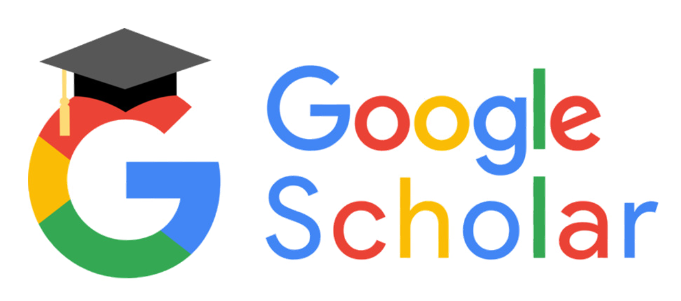Validity Analysis of Virtual Reality Media MENDUA (Menembus Dimensi Wayang) to Improve Students' Cognitive Learning Outcomes
DOI:
https://doi.org/10.26740/ipf.v14n2.p161-169Keywords:
Learning Media, Virtual Reality, Newton's Laws, WayangAbstract
This study is a preliminary study aimed at developing virtual reality technology-based learning media that integrates Javanese culture into Science Physics for High School students. The learning media, MENDUA (Menembus Dimensi Wayang) aims to help students learn Newton's Law by providing a special visualization of the Mahabharata story known as Wayang in Indonesia. This study focuses on the analysis of the validity of the MENDUA learning media by applying the ADDIE research and development method (Analyze, Design, Development, Implementation, and Evaluation). The data collection technique used a validation sheet that is reviewed from six aspects; visual, interest, useful, accurate, legitimate, and structured. The data analysis technique used a Likert scale with a percentage calculation that can be said to be valid or feasible if it meets the validation criteria with a percentage of ≥ 60%. The results of the study showed that the validity of the MENDUA media was declared very valid and feasible to be tested by getting a final score of 89.99%. Thus, it can be stated that the MENDUA media is feasible to be used in learning to improve students' cognitive learning outcomes in learning physics on Newton's Law material. This preliminary study highlights the use of VR-based MENDUA is a new way to learn Physics for students. These results are very important for the further development of MENDUA and other VR-based learning media in the future.
Downloads
References
Alkhattabi, M. (2017). Augmented reality as e-learning tool in primary schools’ education: Barriers to teachers’ adoption. International Journal of Emerging Technologies in Learning, 12(2).
Amir, A., Alim, N., & Yusmanizar, Y. (2023). Komunikasi Politik Kedutaan Besar Republik Indonesia (KBRI) Kuala Lumpur Dalam Promosi Budaya Indonesia Di Malaysia. JIHIF: Jurnal Ilmiah Hubungan Internasional Fajar, 1(2), 55–67.
Arsadhana, I. W. A. S., Dewi, N. K. R. S., & Putri, N. K. J. K. (2022). Aplikasi pembelajaran berbasis virtual reality sebagai inovasi pendidikan berkelanjutan di era society 5.0. Prosiding Pekan Ilmiah Pelajar (PILAR), 2, 736–740.
Blyznyuk, T. (2019). Formation of Teachers’ Digital Competence: Domestic Challenges and Foreign Experience. Journal of Vasyl Stefanyk Precarpathian National University, 5(1), 40–46. https://doi.org/10.15330/jpnu.5.1.40-46
Darmawan, W., Kurniawati, Y., Yulianti, I., & Gumelar, F. E. (2023). Pengembangan nilai kearifan lokal ekologi kampung adat Cikondang dalam lingkungan kebudayaan dan komunitas melalui ecomuseum. AGASTYA: JURNAL SEJARAH DAN PEMBELAJARANNYA, 13(1), 73–89. https://doi.org/10.25273/ajsp.v13i1.15140
Fadlli, Muh. R., Sutopo, S., & Wartono, W. (2019). Analisis Kesulitan Siswa dalam Menyelesaikan Soal Hukum Newton. Jurnal Pendidikan: Teori, Penelitian, Dan Pengembangan, 4(8), 993. https://doi.org/10.17977/jptpp.v4i8.12652
Ghofur, A., & Youhanita, E. (2020). Interactive media development to improve student motivation. IJECA (International Journal of Education and Curriculum Application), 3(1), 1–6.
Hashim, H. (2018). Application of technology in the digital era education. International Journal of Research in Counseling and Education, 1(2), 1.
Kemendikbud. (2022). Capaian Pembelajaran Mata Pelajaran Fisika Fase E-Fase F Untuk SMA/MA/Program Paket C.
Kusdiastuti, M., Harjono, A., Gunawan, G., & Nisyah, M. (2019). Respon Guru dan Peserta Didik Terhadap Pembelajaran Fisika dengan Model Inkuiri Terbimbing Dipadu Advance Organizer. Jurnal Pendidikan Fisika Dan Teknologi, 5(1), 150–155. https://doi.org/10.29303/jpft.v5i1.1174
Makransky, G., & Petersen, G. B. (2021). The cognitive affective model of immersive learning (CAMIL): A theoretical research-based model of learning in immersive virtual reality. Educational Psychology Review, 33(3), 937–958.
Nurrizqa, N., Syahrial, S., Munadi, R., & Yunidar, Y. (2021). Penerapan Metode Perancangan Virtual Reality: Tinjauan Literatur. InfoTekJar: Jurnal Nasional Informatika Dan Teknologi Jaringan, 5(2), 289–295.
Setiaji, B., Mufida, F., & Puspitasari, A. (2023). Perbandingan Efektivitas Pembelajaran Fisika Daring dan Pembelajaran Fisika Luring. Jurnal Pendidikan Jarak Jauh, 1(2), 10. https://doi.org/10.47134/jpjj.v1i2.203
Sugiyono, P. D. (2018). Quantitative, qualitative, and R&D research methods. Bandung:(ALFABETA, Ed.).
Sumaryanti, L. (2018). MEMBUDAYAKAN LITERASI PADA ANAK USIA DINI DENGAN METODE MENDONGENG. AL-ASASIYYA: Journal Of Basic Education, 3(1), 117. https://doi.org/10.24269/ajbe.v3i1.1332
Suncaka, E. (2023). Meninjau permasalahan rendahnya kualitas pendidikan di Indonesia. UNISAN JURNAL, 2(3), 36–49.
Supriadi, M., & Hignasari, L. V. (2019). Pengembangan media pembelajaran berbasis virtual reality untuk meningkatkan hasil belajar peserta didik Sekolah Dasar. KOMIK (Konferensi Nasional Teknologi Informasi Dan Komputer), 3(1).
Tiyas, S. K. (2022). Media Wayang Kulit dalam Pembelajaran Bahasa Jawa di Sekolah Dasar. Kalam Cendekia: Jurnal Ilmiah Kependidikan, 10(2), 337. https://doi.org/10.20961/jkc.v10i2.65653
Vitry, H. S., & Syamsir, S. (2024). ANALISIS PERANAN PEMUDA DALAM MELESTARIKAN BUDAYA LOKAL DI ERA GLOBALISASI. Triwikrama: Jurnal Ilmu Sosial, 3(8), 113–123.
Wardoyo, R. (2023). VIRTUAL REALITY SEBAGAI MEDIA PEMBELAJARAN JARINGAN KOMPUTER. JURNAL TEKNOLOGI INFORMASI DAN KOMUNIKASI, 14(2), 248–254. https://doi.org/10.51903/jtikp.v14i2.586
Zakaria, A., & Anggaryani, M. (2024). Development of Virtual Reality Hydroelectric (VIRRIC) for teaching students about renewable energy. ORBITA: Jurnal Pendidikan Dan Ilmu Fisika, 10(2), 164. https://doi.org/10.31764/orbita.v10i2.24960
Downloads
Published
How to Cite
Issue
Section
License
Copyright (c) 2025 Ratna Rahmawati, Mita Anggaryani

This work is licensed under a Creative Commons Attribution-NonCommercial 4.0 International License.
This work is licensed under a Creative Commons Attribution-NonCommercial 4.0 International License (CC BY-NC 4.0).
Authors retain the copyright and full publishing rights of their articles without restriction. By submitting and publishing in this journal, the author grants the journal the non-exclusive right to publish and distribute the article, provided that proper attribution is given and the use is non-commercial.
To view a copy of this license, visit https://creativecommons.org/licenses/by-nc/4.0/
 Abstract views: 68
,
Abstract views: 68
, PDF Downloads: 39
PDF Downloads: 39




